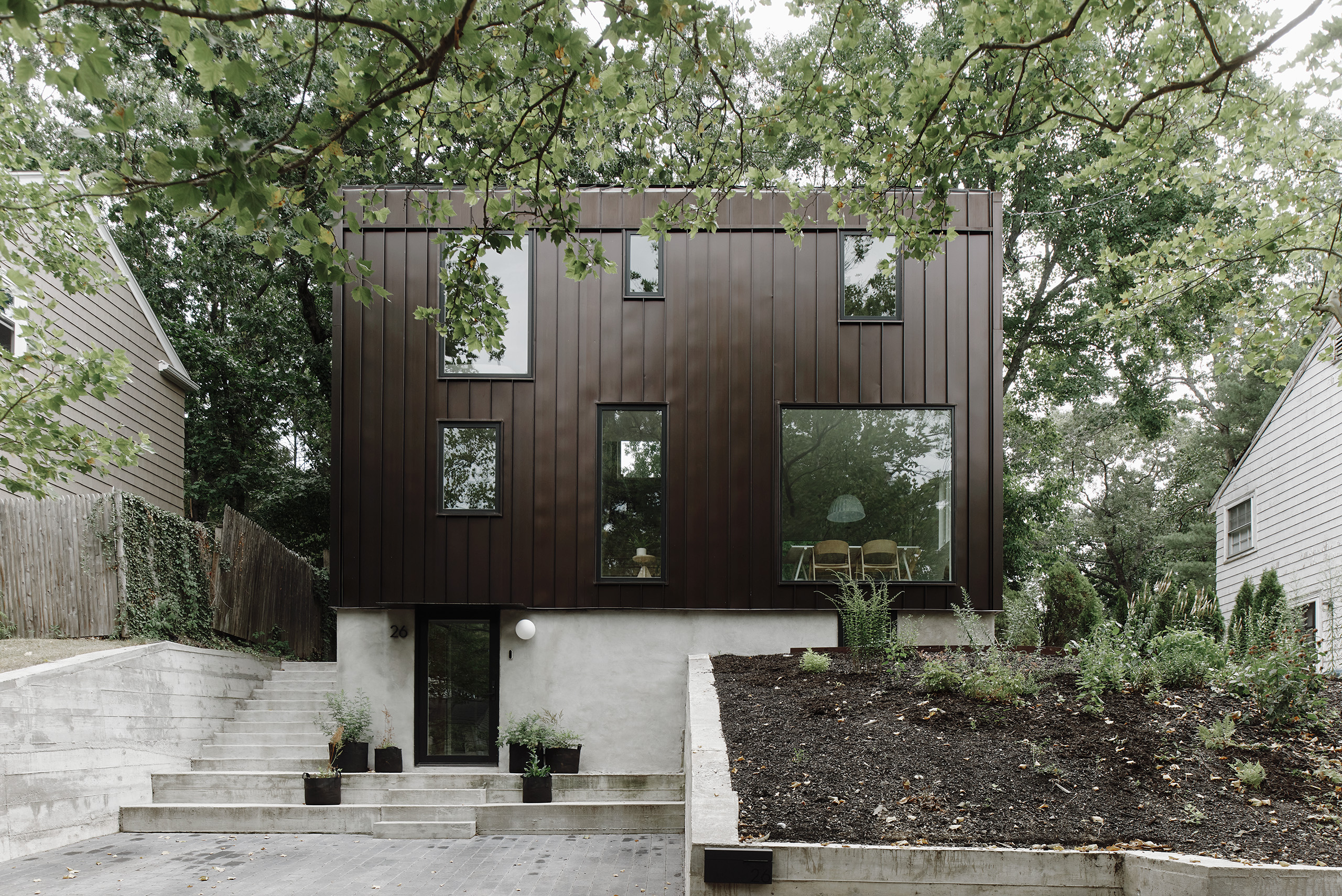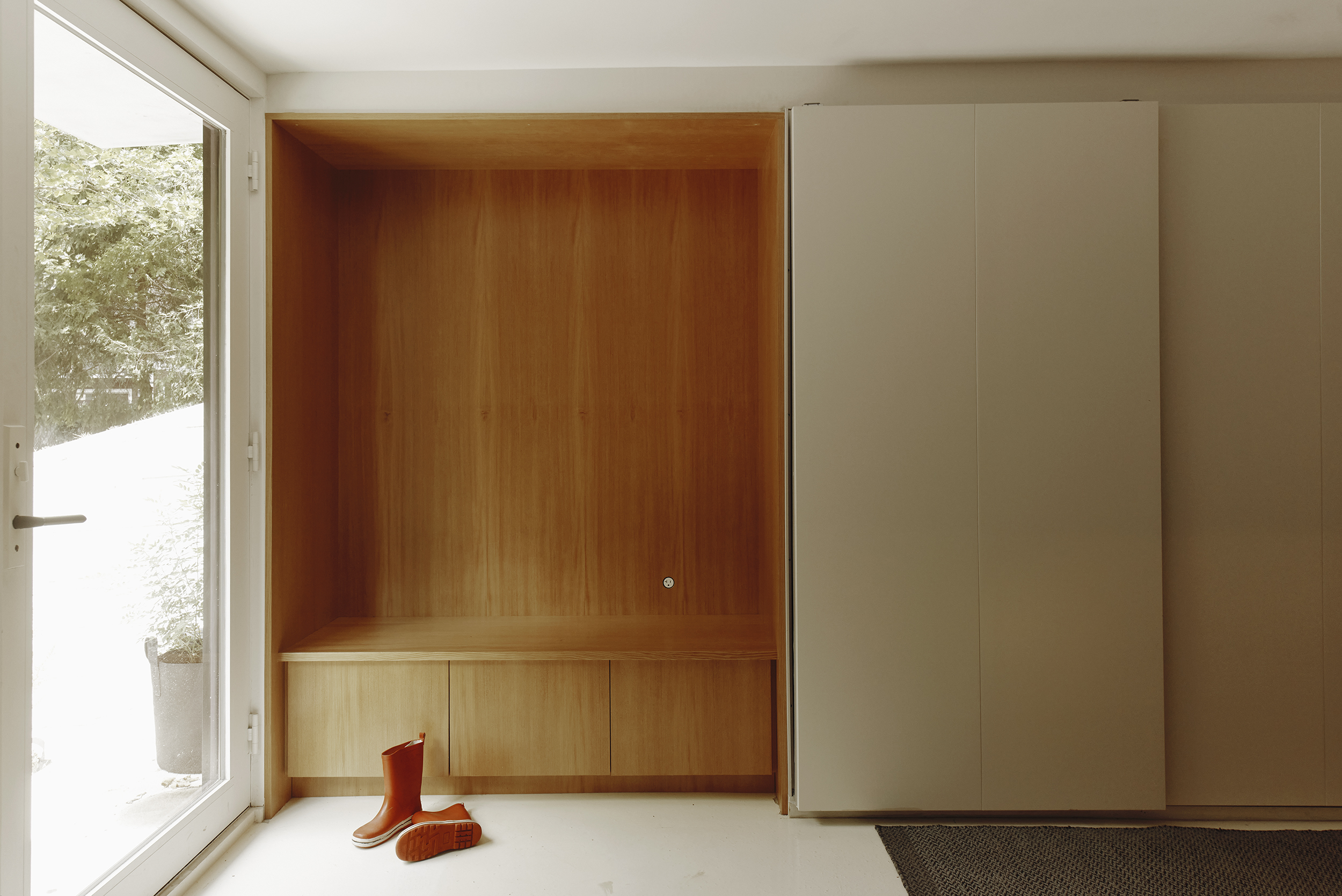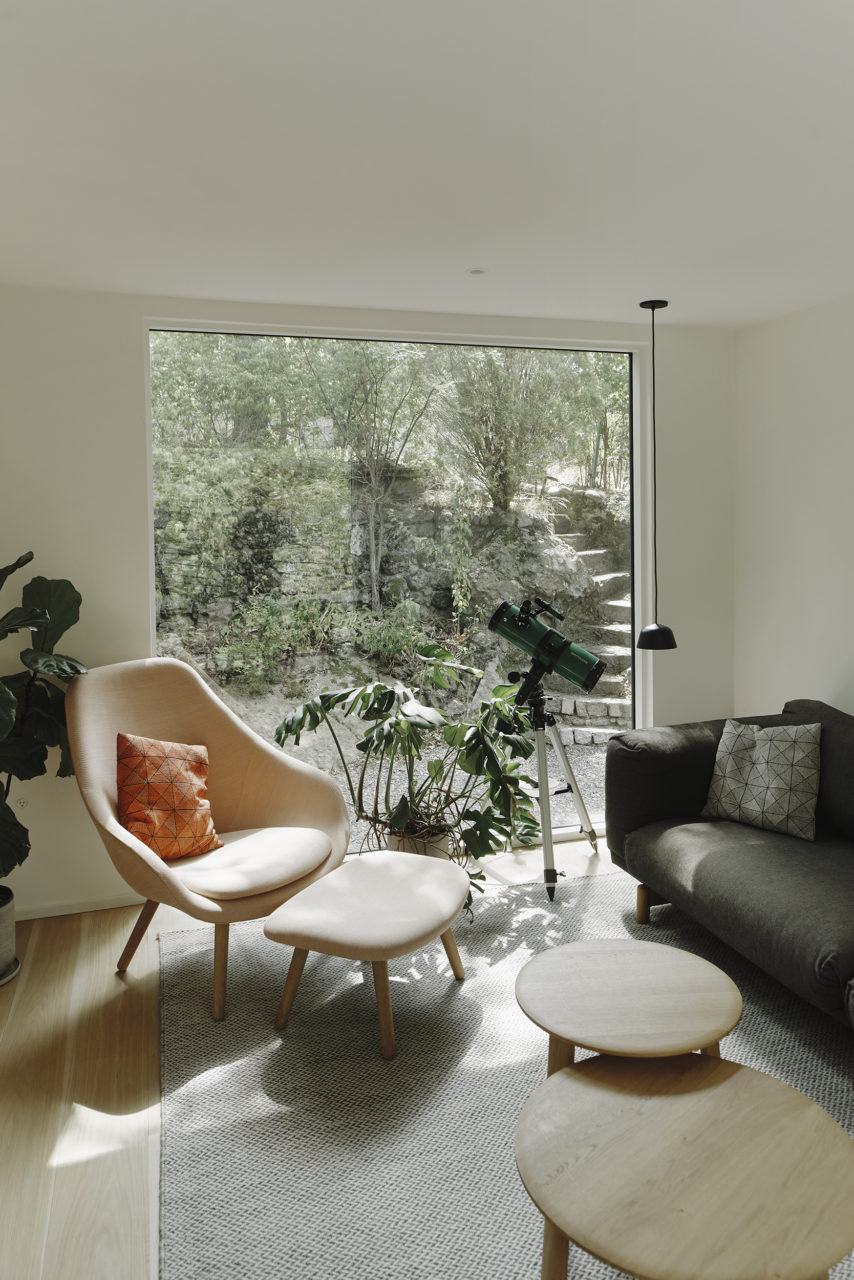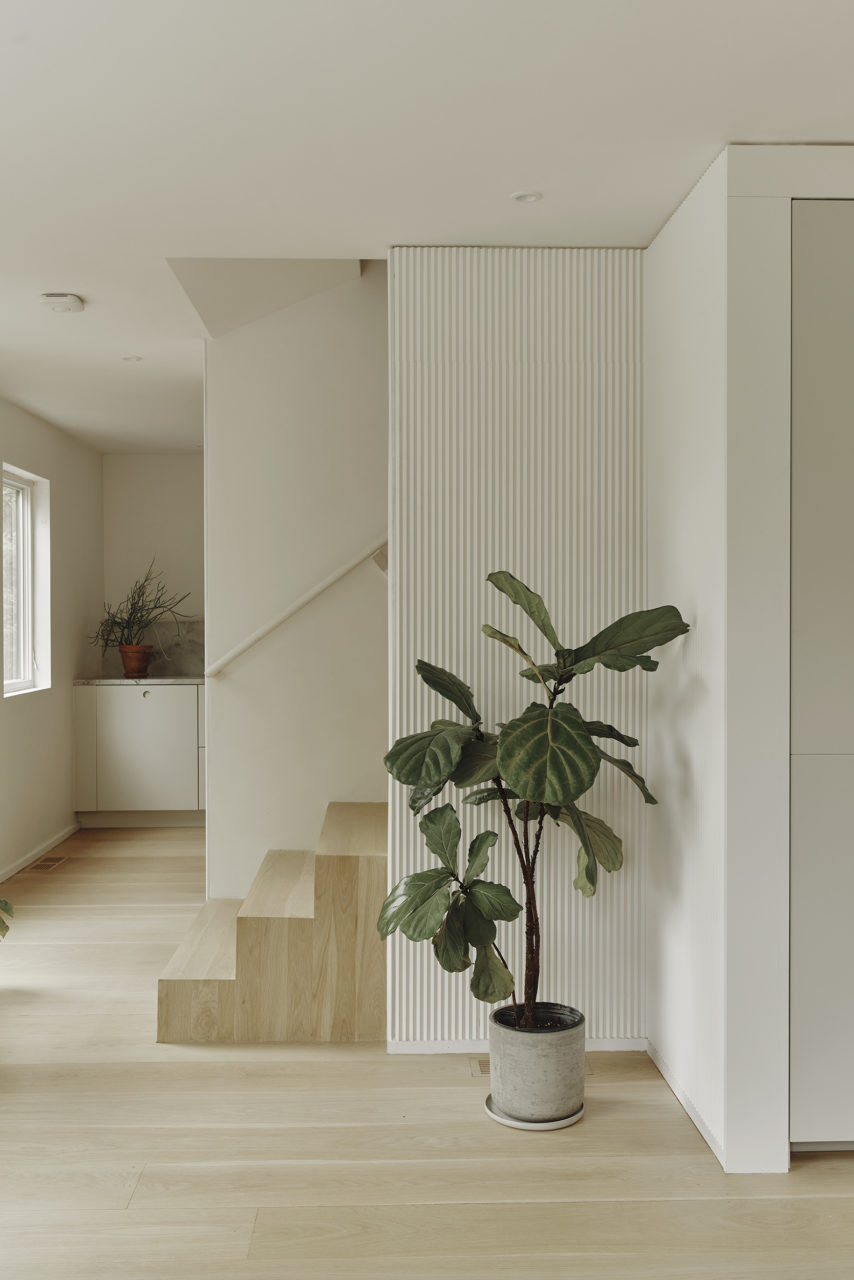During the first half of the 20th century, over 75,000 new homes across the United States were plucked directly from the pages of a Sears, Roebuck & Co. catalogue. From 1908 to 1940, the multifaceted company offered a Modern Homes Program which produced a series of standard designs that could be shipped in parts to the nearest train station for fast and easy construction. (After becoming the world’s largest retailer, Sears later filed for bankruptcy in 2018.) Beloved by architectural historians, many of these kit-of-parts residences are still standing, including a 1,400-square-foot Newcastle Model on a steep site in Boston’s Brookline neighborhood. Embracing the home’s historical context and quintessential New England design, Elle Gerdeman, principal of local architecture practice CO—G, led a renovation that updated the modest, three-story home for the 21st century.
Gerdeman began the renovation by removing the home’s segmented framing to open the space for its tenants, a young, dynamic family of five. In the spirit of preservation, CO–G maintained the home’s gabled form and instead focused on the apertures as opportunities for modernization. Existing openings were enlarged, and all new windows were replaced with clear glazing without divisions or shutters. Gerdeman, who is also a design critic in architecture at the Harvard Graduate School of Design, told AN Interior that she “maintained the same shape of the house but used a surgical approach to open the space from inside out.” The technique tracks, as Gerdeman previously worked at Höweler + Yoon in Boston and CO—G’s cofounder Kyle Coburn—the “CO” to Gerdeman’s “G”—is a director there.

The design’s expanded openings allow direct views of the surrounding landscape, including Puddingstone boulders and the mature tree canopy. The home’s new windows sit flush against the new aluminum cladding and align with the standing-seam divisions that wrap up and over the home’s exterior elevations, a surface that‘s only interrupted by a batten that captures the top of the upper windows.
On the front facade, the central, original door was converted into a three-by-seven-foot window that permits light into the living and dining spaces. The main entry to the home was relocated to the ground floor—formerly a concrete, two-car garage, whose large opening is now reduced in size—which continues to support the renovated structure above. The stucco finish wraps the foundation, forming a monolithic base that anchors the lined metal surfaces above.

A considerable material shift takes place on the interior of the home. A combination of soft whites, warm grays, and wood tones create an inviting shelter that contrasts the dark, sleek exterior. On the ground floor, one first encounters a mudroom lined in Douglas fir plywood. The warm wood continues up the central stair lined on one side by backlit, semi-translucent polycarbonate. White walls and paler, white oak flooring on the second level refract light into the open-plan living and dining space. To break up these expanses, ribbed foam panels wrap the home’s central stair.
In the kitchen, the SuperWhite Quartzite counter spans the full width of the short side of the home. It wraps up the wall to become a backsplash and accommodates a window. The material is paired with soft gray cabinetry from Reform, which conceals all appliances.

These refined moves continue on the third floor, where three minimalist bedrooms incorporate only soft whites and grays. The exception to the rule is the Douglas fir plywood-lined attic space that connects the two children’s rooms. Partially shielded by polycarbonate, the lofted play space is accessed by detachable wooden ladders and glows like a nightlight in the evenings thanks to concealed LED lighting.

The home is a study in editorial prowess: The overall profile is maintained, but thanks to the new cladding, fenestration edits, and interior finishes, the entire vibe of the home has been steered toward a more moody and essential feeling. The new home offers residents more intimate access to their surroundings—“I feel like we’re cheating nature,” the homeowner remarked on a recent tour, a measure of how well the exterior is brought inside. Friends and neighbors lovingly refer to the structure as “the Monopoly house,” due to its gabled form.
While the home’s origin is the stuff of American dreams, CO—G’s work, with equal influence from Scandinavian and Swiss sources, injects a cosmopolitan sensibility into the renovation. Finished last year, the project is a deft update that readies the existing residence for a new generation of family life.


